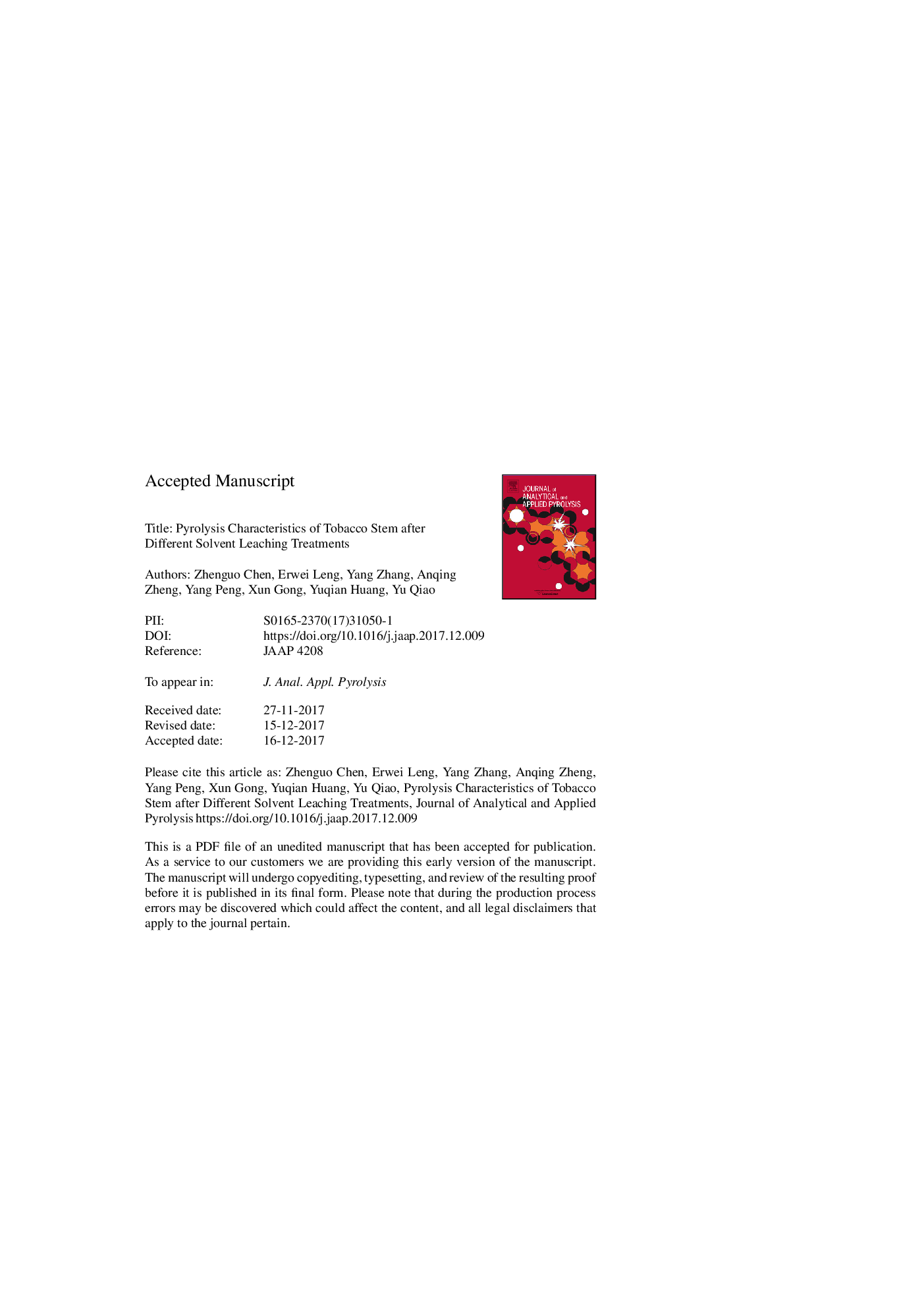| Article ID | Journal | Published Year | Pages | File Type |
|---|---|---|---|---|
| 7606518 | Journal of Analytical and Applied Pyrolysis | 2018 | 26 Pages |
Abstract
The considerable amounts of alkaloids in tobacco stem (TS) make it wasteful and environmentally detrimental to directly pyrolyze it. This paper reveals the effects of leaching treatments with different solvents (hydrochloric acid, water and ethyl alcohol) on the pyrolysis characteristics of TS using TG-FTIR and Py-GC-MS. Alkaloids mainly consisting of nicotine were almost completely removed by leaching treatments, leading to the reduction of the N content in treated samples and the reduction of N-containing compounds in the obtained tar by Py-GC-MS. Potassium and calcium, which are the two main cations in TS, were removed completely by acid leaching, whereas calcium is resistant to water and alcohol. The removal of inorganic species in leached samples reduced the stability of TS at low temperatures (<â¼270â¯Â°C) but improved it at high temperatures (270-490â¯Â°C). In addition, more sugars, such as levoglucosan, and high-mass weight species were generated by pyrolysis of TS leached by several solvents, especially acid. Different from water and alcohol, hydrochloric acid strongly destroyed the matrix structure of TS and lowered its thermal stability. Because of the removal of acid-soluble lignin by hydrochloric acid, the generation of benzenes during pyrolysis were markedly inhibited.
Related Topics
Physical Sciences and Engineering
Chemistry
Analytical Chemistry
Authors
Zhenguo Chen, Erwei Leng, Yang Zhang, Anqing Zheng, Yang Peng, Xun Gong, Yuqian Huang, Yu Qiao,
